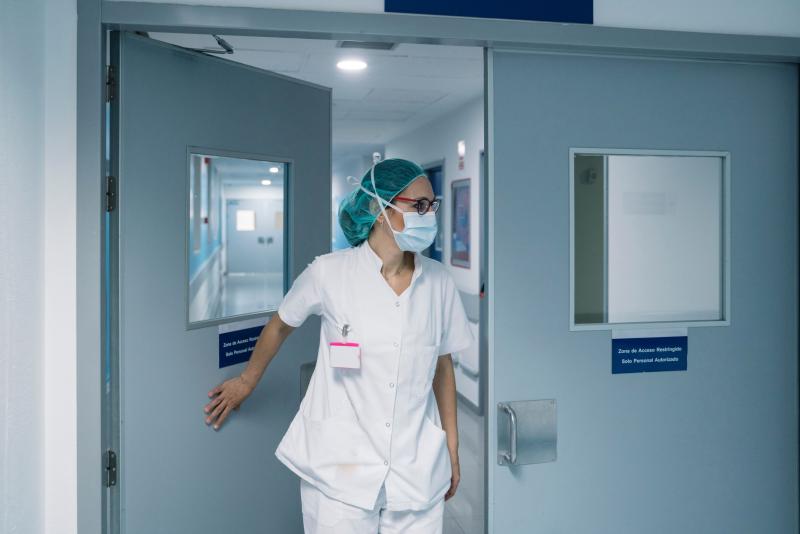Features To Look for in Healthcare Doors

Healthcare environments demand rigorous attention to detail, and that extends to the doors used throughout facilities. Whether it’s for clinics, hospitals, or outpatient centers, healthcare doors should increase safety, hygiene, functionality, and aesthetics. Selecting the right doors involves more than aesthetics; it's about meeting specific healthcare requirements that prioritize patient and staff well-being. Here are key features to consider when choosing healthcare doors to help them meet industry standards and provide optimal performance.
Durability and Strength
Healthcare doors experience constant use, with staff, patients, and visitors moving through them all day. It’s essential to choose doors constructed with durable materials like steel, high-pressure laminate, or heavy-duty wood core to withstand wear and tear. These materials resist impact and help the doors maintain their functionality over time. Durability is particularly important in emergency rooms, operating suites, and high-traffic hallways, where the consistent opening and closing of doors is unavoidable. Choosing doors designed for high performance provides long-term reliability, reducing maintenance costs and downtime.
Infection Control and Hygiene
Cleanliness and infection control are non-negotiable in healthcare facilities. Doors should feature smooth, non-porous surfaces that are easy to clean and disinfect. Finishes such as antimicrobial coatings further help prevent the growth of bacteria and pathogens, promoting a safer environment for staff and patients. Seamless door designs with minimal crevices or joints reduce places for dirt and germs to accumulate, making cleaning faster and more effective. Additionally, door hardware, like push plates and handles, should also incorporate germ-resistant materials to further improve hygiene.
Accessibility and Ease of Use
Healthcare environments must be inclusive and provide easy access for all. Doors should comply with ADA (Americans with Disabilities Act) accessibility guidelines, featuring designs that accommodate individuals with mobility challenges, wheelchairs, or assistive devices. Automatic or power-assisted sliding doors are an excellent choice for facilities aiming to increase accessibility. These doors make it effortless for patients and staff to move through, particularly in busy areas such as main entrances, emergency rooms, or surgical suites. Quiet operation is another bonus, minimizing disruptions in sensitive environments such as recovery wards.
Acoustic Control
Noise levels significantly impact patient recovery and the overall healthcare experience. Doors with built-in acoustic insulation help minimize noise transfer between rooms, providing a quieter, more restful environment for patients. Look for doors with soundproofing technologies, such as dense cores or specially engineered seals. Acoustic control is particularly beneficial in areas like patient rooms, consultation spaces, and recovery wards, where privacy and tranquility are paramount.
Fire and Smoke Resistance
Providing safety in a healthcare setting includes being prepared for emergencies. Doors integrated with fire-rated materials and smoke seals are essential for containment and evacuation planning in the event of a fire. Fire-resistant healthcare doors can slow the spread of flames and smoke, providing valuable time for evacuations and minimizing damage. Make sure that the doors comply with local building codes and certifications to meet the required safety standards for your healthcare facility.
Aesthetic Integration
While functionality is important, healthcare doors should also contribute to a welcoming and calming environment. Selecting doors that complement the facility's interior design creates a unified and professional appearance. Additionally, visual appeal fosters a more comfortable setting for patients and visitors. Choose doors with customizable finishes, colors, and textures to integrate seamlessly with the facility's aesthetic. For example, woodgrain patterns or soft-toned laminates can add a sense of warmth to patient rooms, while bold, clean designs might be more suitable for administrative areas.
Privacy and Security
Maintaining patient privacy and security is a fundamental requirement in healthcare. Doors should be equipped with locks, frosted glass, or other privacy-friendly materials to maintain compliance with confidentiality regulations like HIPAA. Specialized features such as controlled access or key-card systems increase security, particularly in areas like pharmacies, operating rooms, or medical record storage spaces. These measures make sure that only authorized personnel can enter sensitive areas while keeping patients' information secure.
Proper Installation and Professional Services
The quality of a healthcare door is only as good as its installation. Partnering with professional installation services makes sure that the doors are correctly fitted, providing smooth operation, safety compliance, and a hassle-free process. Professionals understand the specific challenges faced in healthcare facilities and can customize doors to meet unique requirements, including size specifications, automation integration, or acoustic improvements. Proper installation also minimizes common issues such as misalignment or faulty mechanisms, saving facilities from unnecessary repairs and operational disruptions in the future.
Final Thoughts
Selecting the right doors for healthcare facilities requires attention to multiple features, from durability to accessibility and infection control. These doors play an important role in shaping the safety, privacy, and overall experience of patients and staff. Every decision needs to be backed by the expertise of professional installation services like Horton Automatics to achieve the highest standards of functionality, longevity, and compliance. Elevate your healthcare environment by choosing doors equipped to meet your unique demands efficiently and effectively.
Comments